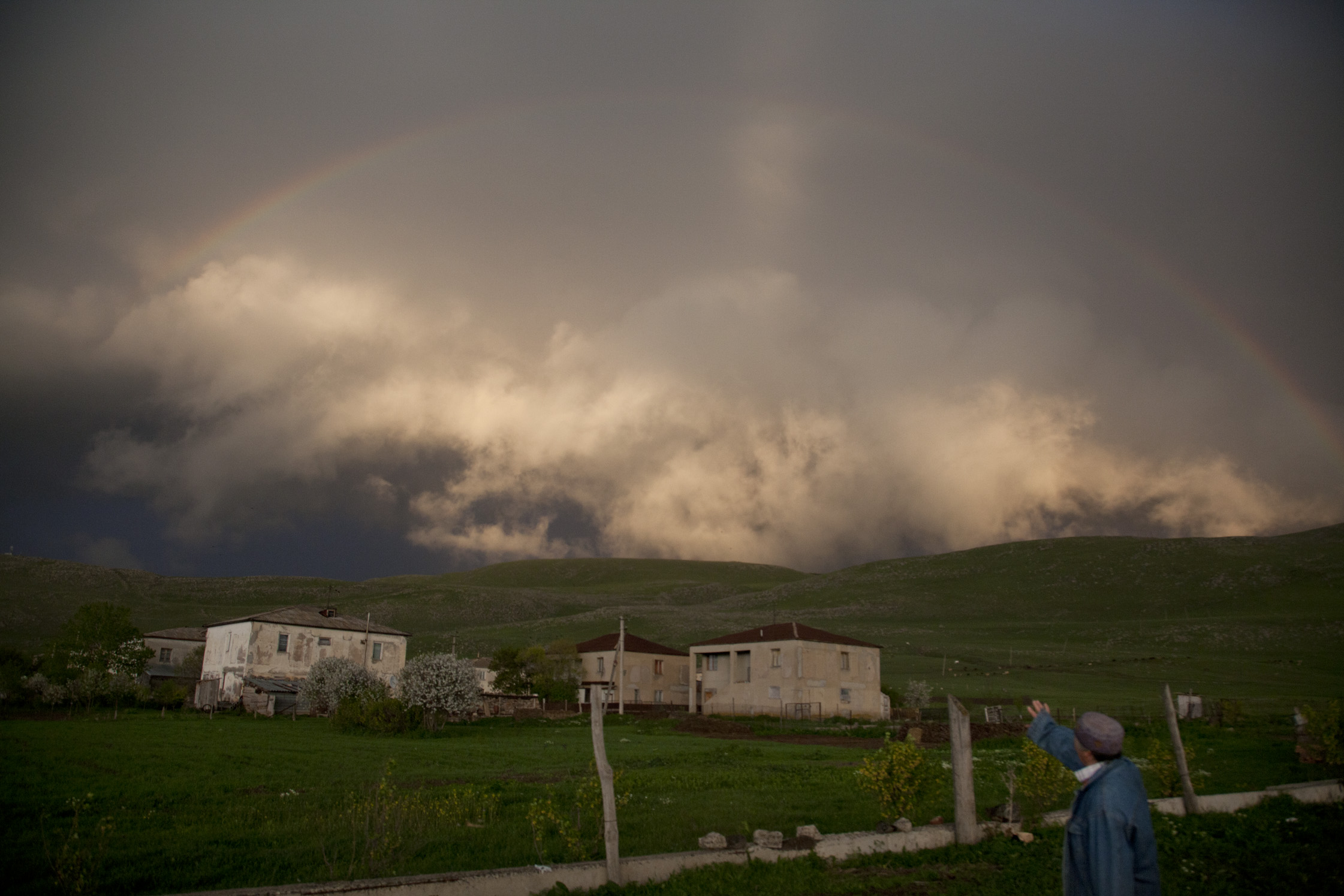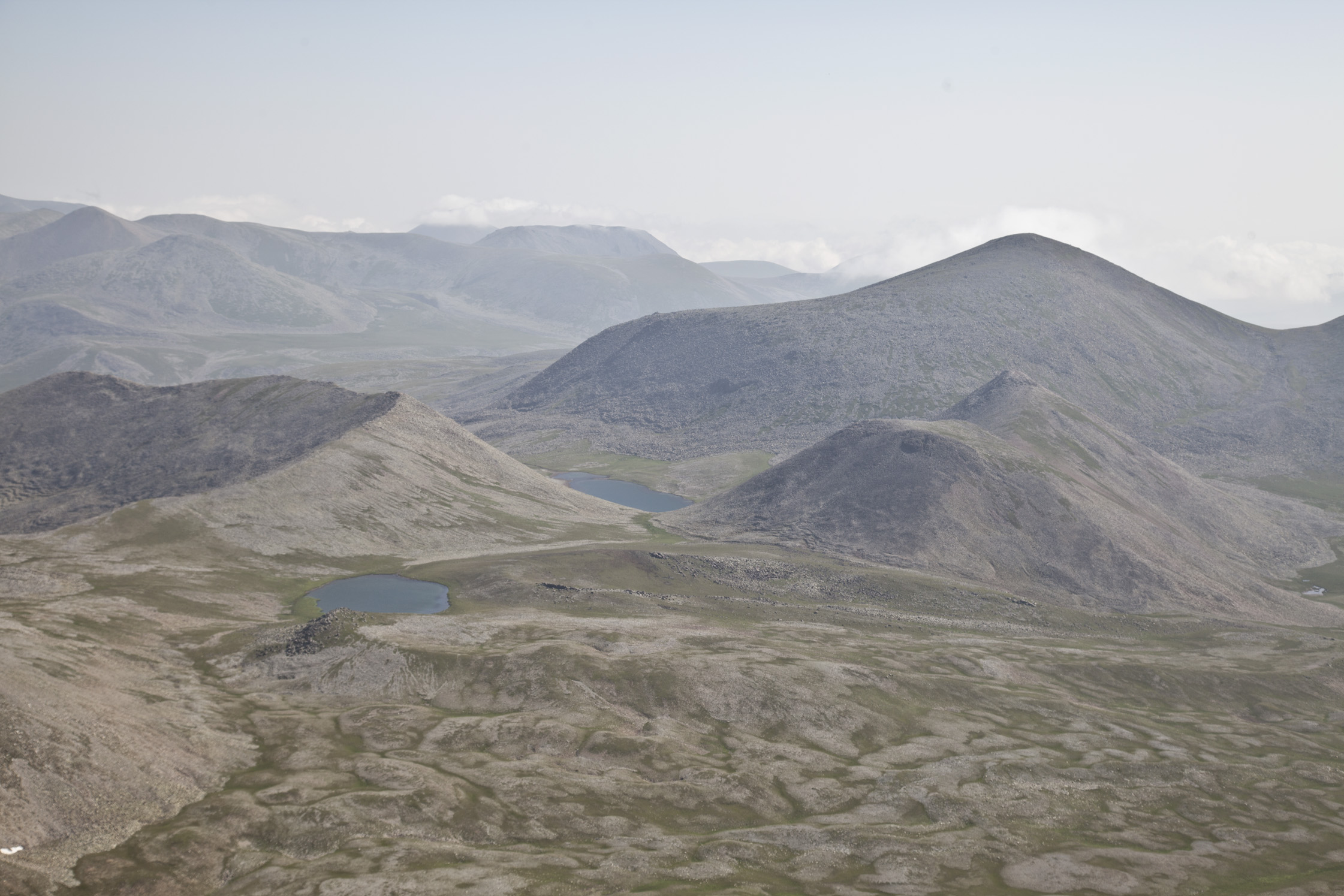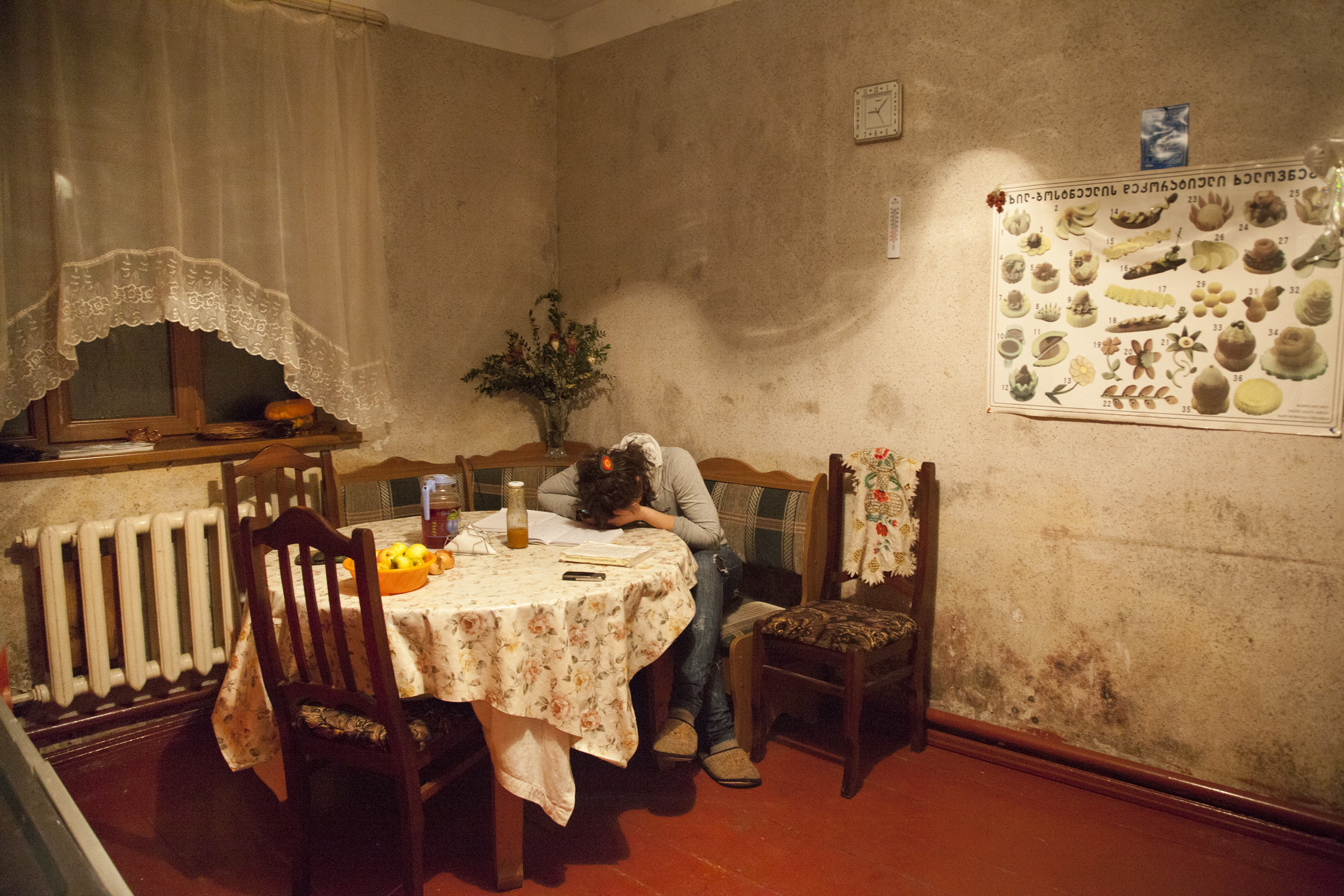“Whenever I go back to Samtskhe Javakheti I feel like time doesn’t exist, like it has been frozen,” explains Georgian photographer Daro Sulakauri. Her work captures the impact of this stillness on both the land and the relations between the Georgians and Armenians who live there.
For Daro, the region of Samtskhe Javakheti bears mythical connotations—an inaccessible place of fairy-tale like beauty. Small townships are scattered across a vast desert, graveyards are silhouetted against mountain ranges and shrines find their home amongst rock formations. The region has a history defined by disconnect: struggles with unemployment, ownership, education and lack of industry due to remoteness. Such a past bleeds into contemporary understanding of this geographically isolated part of the Caucasus region, known equally for the starkness of its landscape and the barely hidden tensions that exist in its ethnically diverse community.
Daro spent several months in the province during 2012 and while photographing the people she met, developed a growing understanding of the intensity of the Armenian-Georgian situation. Bordering Armenia and Turkey, Samtskhe Javakheti is a region that has been prominent in cultural commentary throughout time: its history marked by conflict, migration and tensions between minority groups displaced by everyone from the Ottomans to the Soviets. The ethnic and religious demography of the area is complex and historically fraught, with over half the inhabitants of the area belonging to minority groups. Here, Georgians comprise of around 3% of the population, and Armenians—around 60%. This is a part of the country where the Georgian language is rarely spoken, and where lines between ethnic groups—whilst invisible—remain entrenched.
“I never would have imagined I could feel like a stranger in my own homeland.”
“I never would have imagined I could feel like a stranger in my own homeland. When I first arrived it felt strange that I had to speak Russian in the stores to buy something—because I didn’t know Armenian. Rarely did I see a Georgian. It felt like something that was my own had been taken away” Daro explains.
In Samtskhe Javakheti, Georgians and Armenians live in different towns, study in different schools, and speak different languages. For Daro, this division was something she documented as a Georgian to find answers: “I wanted to photograph the hidden conflict between the two ethnic groups, but how do you photograph something that’s hidden and not visible to the eye? There were no physical situations that I could depict. It was like photographing the invisible.”
The resulting series show a place that seems to have been forgotten by time. There is a stillness to the landscape of Samtskhe Javakheti, a coldness punctuated briefly by ruddy cheeks and red tapestries. ‘Double Alien’ layers difference against desert and mountain, binding them to the land and uniting them in silence.






Village Okami: Armenians lighting church candles on a what they believe is a holy rock.







Thank you Daro, for sharing your experience of your amazing country with us. If you’d like to see more work from the award-winning photographer, see our feature on Georgian photographers here, or visit her website here.
For more inspired views through the lens of our contributing photographers from around the world, see here.
Photography: Daro Sulakauri
Text: Rosie Flanagan

